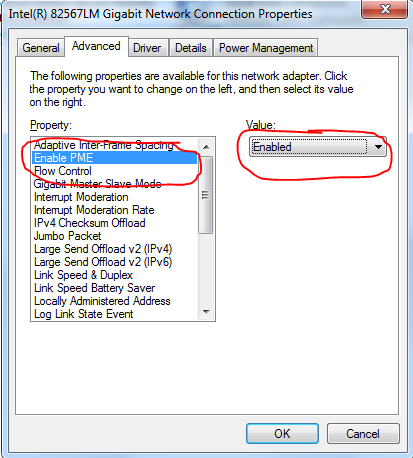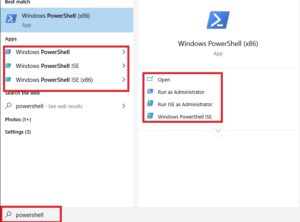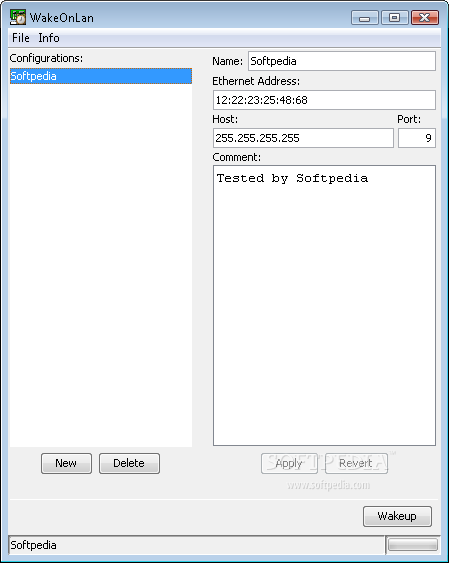
- Wakeonlan powershell how to#
- Wakeonlan powershell install#
- Wakeonlan powershell pro#
- Wakeonlan powershell Pc#
- Wakeonlan powershell download#
Please copy and paste the latest script in there. This has not been updated inside of the monitoring AMPs.
Wakeonlan powershell install#
Update 3: Added better detection logic for nuget which causes a script hang, fixed an import and install module issue. Update 2: Fixed a small encoding issue that crashed the script in some cases. Update: N-Central remediation AMP can be found here. I did not have a large stack of devices to test on other than Dell devices, so if you find any issues with Lenovo or HP devices, let me know and send me a transcript, maybe I can help you figure it out!Īnd that’s it. I tried many scripts I had found online and as a last ditch effort, I installed the 'WakeOnLAN 1.0' Module but while it says it executes successfully the server does not boot. Like I said in the start – This still is slightly experimental for me. $PPNuGet = Get-PackageProvider -ListAvailable | Where-Object We match based on the device manufacture in WMI.
Wakeonlan powershell download#
It will also update PowerShell Get and also download the correct module for the device. The monitoring script only works with PowerShell 5.0 or higher. Disclaimer: I tested the script on a handful of devices, so no guarantees of course. The script will work for Dell, HP, and Lenovo. As far as power options, those can be set via GPO, which means you can also use PowerShell to manipulate the relevant registry keys. ARP (Address Resolution Protocol) and NS (Neighbor Solicitation). Dell has the DTK and Lenovo exposes wmi classes. Improved wake patterns reduce the number of false wakes.
Wakeonlan powershell how to#
You'll need to look to the hardware manufacturer on how to automate those settings changes. Two of them use a module, the other uses a WMI class. Wake On LAN is controlled at the BIOS level. During my discoveries I’ve found that the three biggest manufactures all have a method to enable WOL directly with PowerShell. I figured this could be a pretty cool exercise, I’ve seen a bunch of people making very device specific scripts to enable WOL, but not a lot of manufacture specific scripts that would enable it for an entire line of devices. With the current stress of everyone wanting to work from home via all sorts of tools, my friends found some devices that aren’t replying to WOL packets or machines that simply were not configured for WOL yet. There are two forms of WOL: OS based, to let a machine start up from standby or hibernation, and BIOS based to boot computers which are completely turned off. WOL stands for Wake-On-Lan and is used to boot machines without user intervention.

Note: you’ll need Remote Server Administration Tools (RSAT) installed which you can download from Microsoft:ħ-zip (1) Access (1) Acclaim (1) Control Panel (1) Delicious (1) ETL (1) explorer.Some of my friends (Hi Joe! Hi Tyler!) recently requested a script to both monitor and enable WOL for workstations at their clients.
Wakeonlan powershell Pc#
Of course, WOL must be enabled on remote PC for this to work. Just change MAC address and copy and paste. Minimum = 1ms, Maximum = 2ms, Average = 1ms Packets: Sent = 19, Received = 12, Lost = 7 (36% loss),Īpproximate round trip times in milli-seconds: Sample usage: PS> Import-Module WakeOnLanCmdlet. Reply from 10.10.1.179: Destination host unreachable. This project implements a Wake On LAN C library and PowerShell cmdlet.

Pinging AP01-1221-314.AP.local with 32 bytes of data $UdpClient.Send($MagicPacket,$MagicPacket.Length) Sample usage: PS> Import-Module WakeOnLanCmdlet.dll PS> Wake-Computer -MacAddress '00-01-02-aa-ab-af' This example would send a Wake On LAN magic packet to the machine with a MAC address of 00-01-02-aa-ab-af that is on the same subnet as the machine running the cmdlet. Under the 'Recovery options' section, click the Restart now. The only mandatory param here is the mac address net. Click the Recovery page on the right side. Wake On LAN Powershell Raw wol.ps1 These are the parameters to the script.

] $MagicPacket = (,0xFF * 6) + ($MacByteArray * 16) This project implements a Wake On LAN C library and PowerShell cmdlet. To enable Wake on LAN on the UEFI firmware, use these steps: Open Settings. $MacByteArray = $Mac -split "" | ForEach-Object

Wakeonlan powershell pro#
Run from a Windows 7 Pro with Powershell running with domain admin credentials. How to power-on remote PC using wake-on-lan (WOL) and Powershell.


 0 kommentar(er)
0 kommentar(er)
